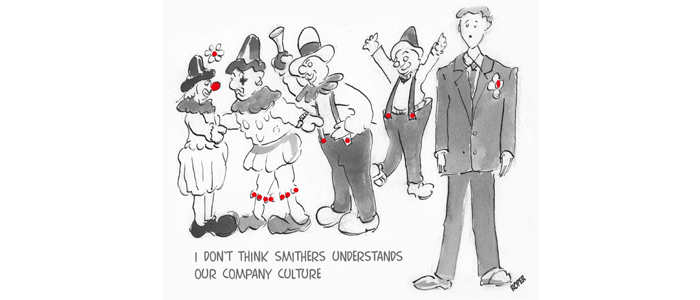We can learn a lot from organisations whose strong and adaptive corporate cultures give them a powerful competitive edge. Here are our top ten compelling reasons why.
- Leadership is critical in codifying and maintaining an organisational purpose, values and vision. Leaders must set the example by living the elements of culture: values, behaviours, measures, and actions. Values are meaningless without the other elements.
- Like anything worthwhile, culture is something in which you invest. An organisation’s norms and values aren’t formed through speeches but through actions and team learning. Strong cultures have teeth. They are much more than slogans and empty promises. Some organisations choose to part ways with those who do not manage according to the values and behaviours that other employees embrace. Others accomplish the same objective more positively.
- Employees at all levels in an organisation notice and validate the elements of culture. As owners, they judge every management decision to hire, reward, promote and fire colleagues. Their reactions often come through in comments about subjects such as the “fairness of my boss.” The underlying theme in such conversations, though, is the strength and appropriateness of the organisation’s culture.
- Organisations with clearly codified cultures enjoy labour cost advantages for the following reasons:
*They often become better places to work.
*They become well known among potential employees.
*The level of ownership (referral rates and ideas for improving the business of existing employees) is often high.
*The screening process is simplified, because employees tend to refer acquaintances who behave like them.
*The pool of prospective employees grows.
*The cost of selecting among many applicants is offset by cost savings as prospective employees sort themselves into and out of consideration for jobs.
*This self-selection process reduces the number of mismatches among new hires. - Organisations with clearly structured and enforced cultures enjoy great employee and customer loyalty, in large part because they are effective in either altering ineffective behaviours or disengaging from values-challenged employees in a timely manner.
- An operating strategy based on a strong, effective culture is selective of prospective customers. It also requires the periodic “firing” of customers. This strategy is especially important when customers “abuse” employees or make unreasonable demands on them.
- The result of all this is “the best serving the best”.
- This self-reinforcing source of operating leverage must be managed carefully to make sure that it does not result in the development of dogmatic cults with little capacity for change. High-performing organisations periodically revisit and reaffirm their core values and associated behaviours. In addition, they often subscribe to some kind of initiative that requires constant benchmarking and searching for best practices both inside and outside the company.
- Organisations with strong and adaptive cultures foster effective succession in the leadership ranks. In large part, the culture both prepares successors and eases the transition.
- Cultures can sour. Among the reasons for this are success itself, the loss of curiosity and interest in change, the triumph of culture over performance, the failure of leaders to reinforce desired behaviours, the breakdown of consistent communication, and leaders who are overcome by their own sense of importance.
There is a pattern in the actions and activities involved in developing strong and adaptive ownership cultures. As a leader of an organisation, if you consistently build and reinforce such a culture, you will create a competitive edge that is hard to replicate.
Adapted from The Ownership Quotient: Putting the Service Profit Chain to Work for Unbeatable Competitive Advantage by Heskett, Sasser & Wheeler, Harvard Business Press.
Would you like to read more of the same? Then click on the graphic below to sign up to our monthly newsletter:

